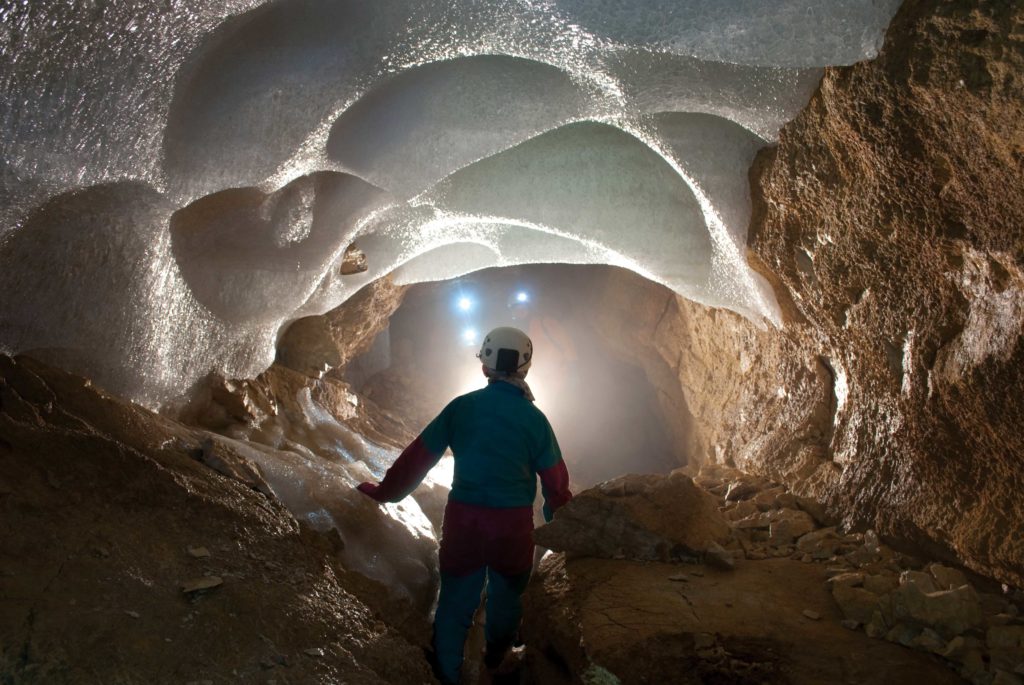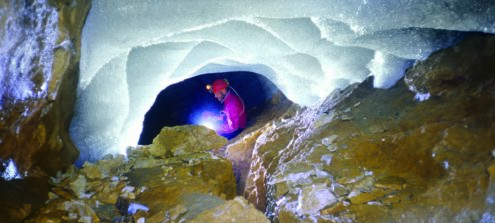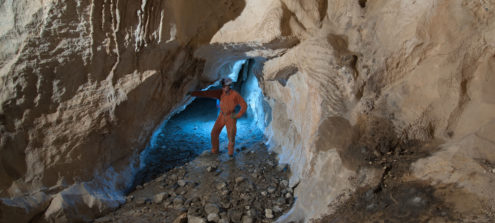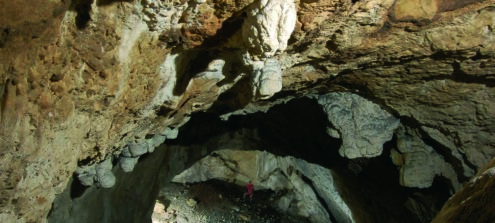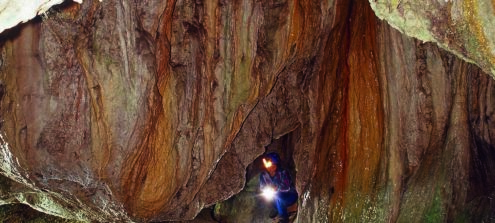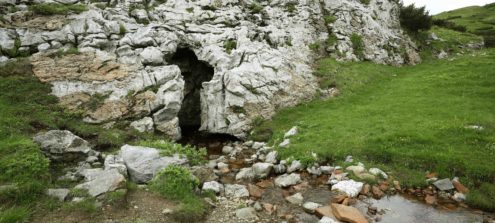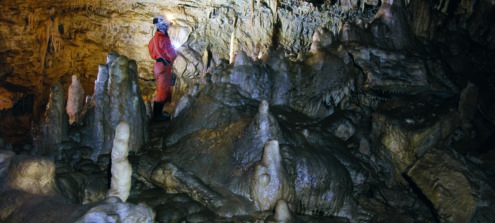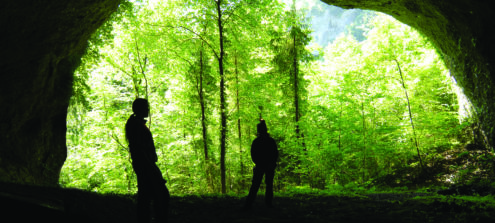Caves
The generic term “caves” refers to the deep morphologies, karstic in origin, formed by the action of water. These are underground cavities that can be broadly divided into two categories: caves with a predominantly horizontal layout and those with a largely vertical one.
In the Carnic Alps the high mountain cavities have a predominantly vertical layout, with a succession of potholes and meanders, while the caves on the valley bottoms usually consist of sub-horizontal tunnels and siphons; the waters of the latter are often piped off to feed the aqueducts serving the smaller villages.
In a cave you can often observe, chambers, tunnels, potholes and siphons.
The tunnels may be vadose, in which a thin trickle of water flows down the surface on the floor of the tunnel, or phreatic, when they are completely filled with water.
The siphons are stretches of phreatic tunnel that connect two vadose tunnels.
The potholes, on the other hand, are excavated by water that comes from above, as drips or as waterfalls.
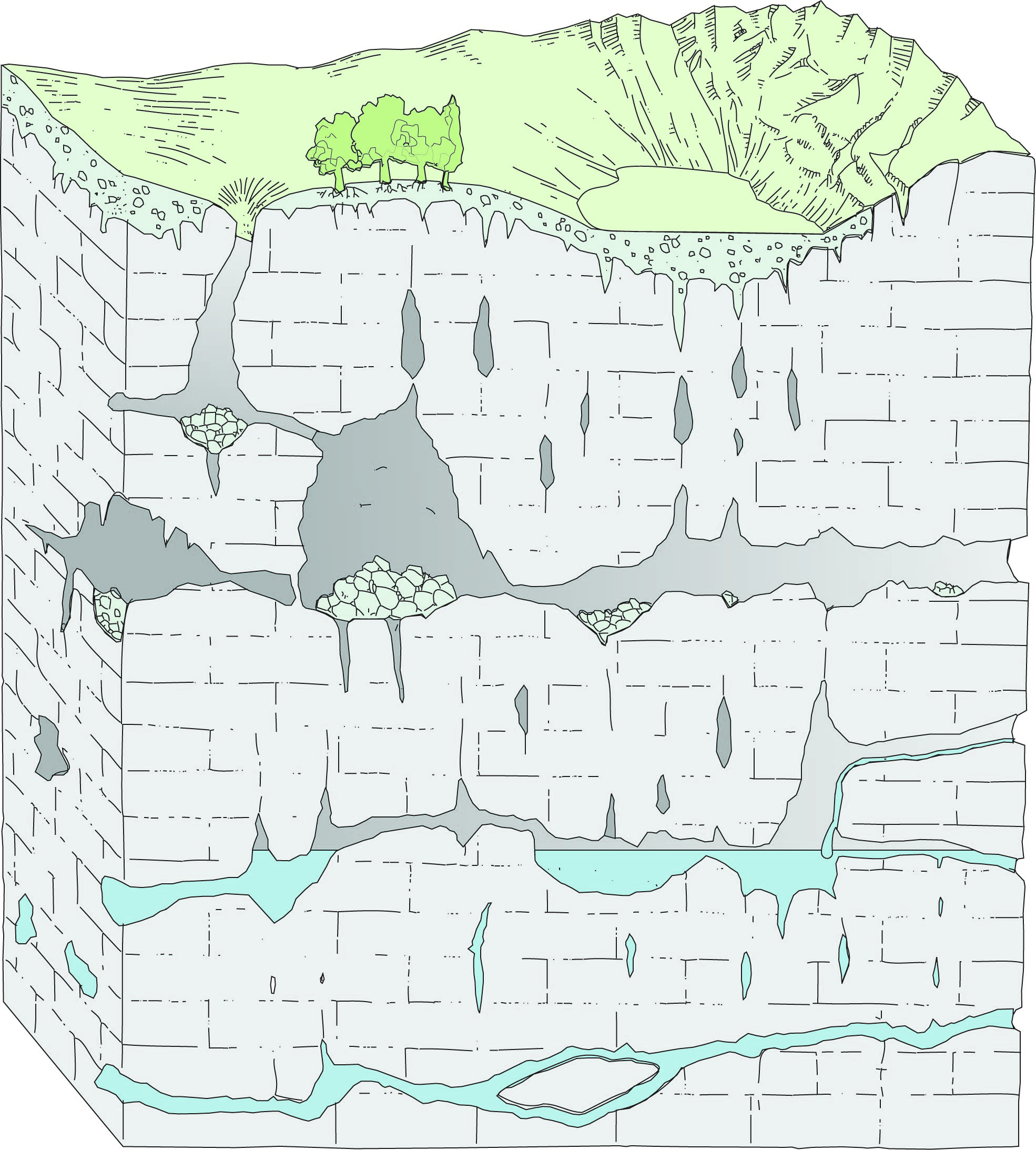
In the area of the Geopark, on the Italian side in particular, there are many caves. To give an idea, the Timau area alone has about 70 caves, of which 9 are over 100 m in length!
It goes without saying that the exploration of caves is an activity for experts and may be very dangerous. It is necessary to be accompanied by speleologists or expert guides, with the right equipment and in the appropriate atmospheric conditions!
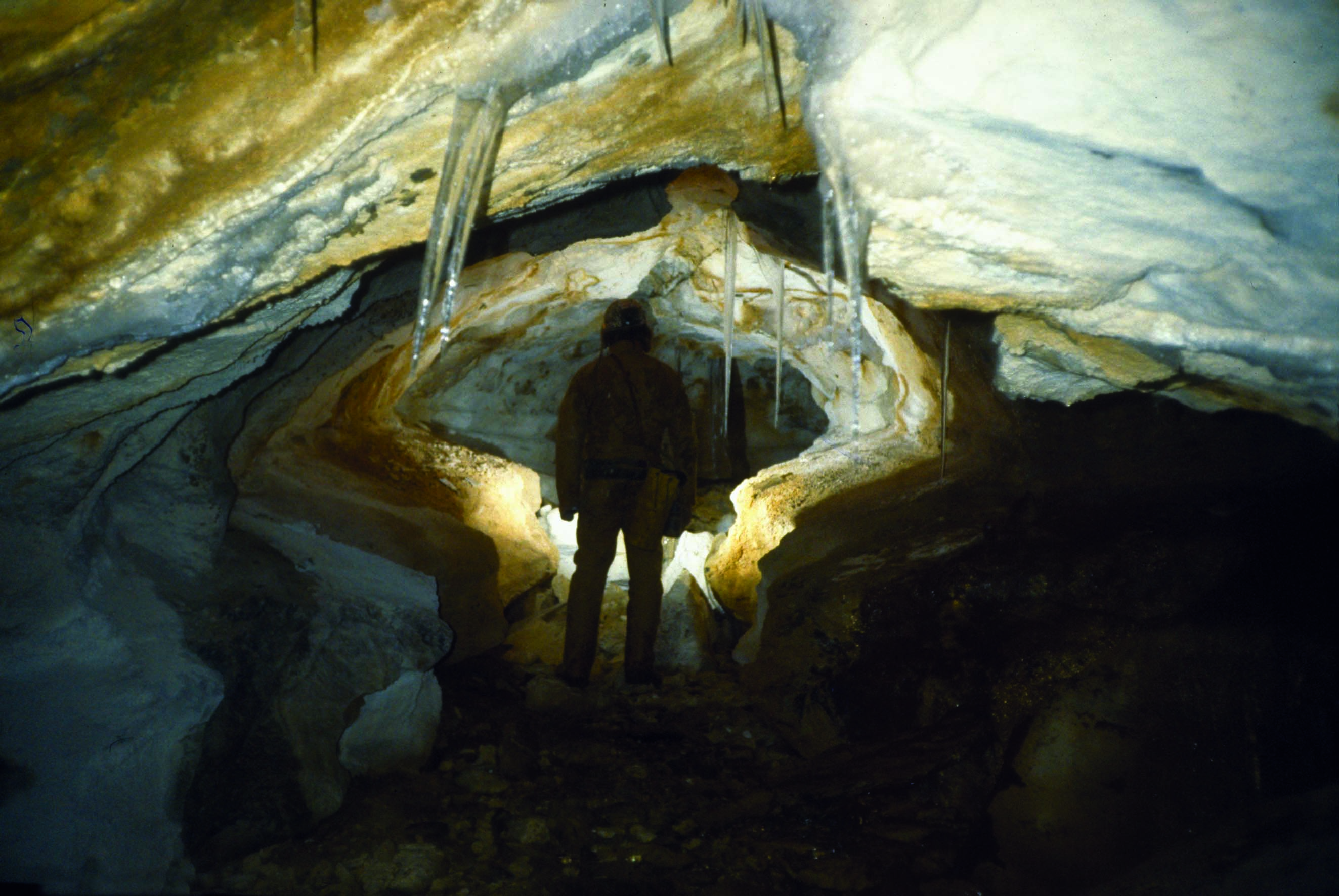
To get some idea
Some examples of caves in the area of the Geopark

